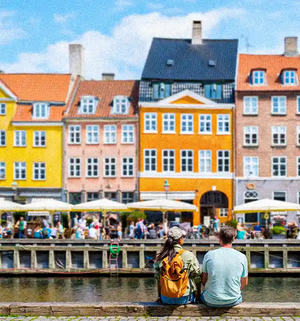Bergama Acropolis Archaeological Site Skip-the-Ticket-Line Ticket
Bergama Acropolis Archaeological Site Skip-the-Ticket-Line Ticket
Non Refundable Reservation
Skip the Ticket Lines
Customer Support
Explore the ancient city of Pergamon, a cultural and scientific hub in the Aegean. Visit iconic landmarks like the Great Altar, steep theatre, and Trajan Temple, reflecting its rich history across eras.
About this activity
Duration
Flexible
Highlights
- Great Altar of Pergamon renowned for its intricate reliefs and historical significance.
- Steep Theatre offering stunning views and a glimpse into ancient entertainment.
- Trajan Temple showcasing Roman architectural excellence.
- Explore multi-era structures from Hellenistic, Roman, Byzantine, and Ottoman periods.
- Once a cultural hub with a vast library and renowned sculpture school.
Description
Includes
- Bergama Acropolis Archaeological Site Entrance Ticket
Excludes
- Hotel Transfer
How It Works
- Opening Hours: 08:00 - 19:00 daily
- Location: Ulu Cami Mah. Bergama/İzmir
- Next-Day Purchase: If your purchase is for tomorrow, your ticket will be sent to you by early morning.
- Future Date Purchase: If your purchase is for a future date, since tickets have expiration dates, you will receive them the day before your service date.
- Your tickets are valid throughout the opening hours.
Select Service Date
Select Service Time
Select your option
Can be booked for up to per booking
Cancellation policy:
- Non-refundable
Selected
Select Persons
Total Price
TRY0.00
Write Your Review
Error Message
Message
© 2025, MegaPass











The Bergama Acropolis Archaeological Site, located in modern Turkey's Aegean region, showcases the grandeur of ancient Pergamon. Established in the 3rd century BC as the Attalid dynasty's capital, Pergamon became a major cultural, scientific, and political hub. Key Hellenistic structures include the steep theatre, Gymnasium, stoa, and the renowned Great Altar of Pergamon, with intricate reliefs and ties to the city's famed sculpture school.
Under Roman rule, Pergamon flourished as the capital of the Roman Province of Asia, adding landmarks like the Asclepion Sanctuary, Trajan Temple, and the Roman Theatre. Byzantine and Ottoman periods added further layers of cultural and religious significance, including the Church of St. John and Ottoman urban structures.
Architectural marvels include the advanced high-pressure water system and the well-preserved upper city, featuring palaces, temples, and one of the ancient world's largest libraries. Now a UNESCO World Heritage Site, Pergamon offers a captivating journey through its Hellenistic, Roman, Byzantine, and Ottoman legacy, reflecting diverse cultural and architectural achievements.